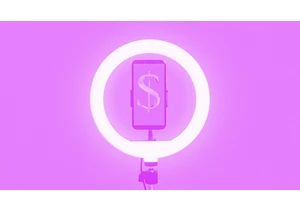Earlier this month I started looking into whether anyone was buying the Apple Vision Pro after I noticed that social media discourse about Apple’s spatial computer seemed to have all but disappeared within weeks of its launch. To me, this suggested that Apple’s first major new product in years wowed a lot of people in the tech world, as expected, but then failed to generate interest from everyday consumers, which Apple needed.
Corroborating that theory was a late February report from TF International Securities analyst Ming-Chi Kuo, who has good connections with Asian supply chain sources. In that report, Kuo said Vision Pro demand was “slowing significantly” in the U.S., just four weeks after the device’s launch.
Now, Kuo is out with another report suggesting that Apple’s hopes for a Vision Pro success story are dwindling even more.
Kuo’s newest report, from Tuesday states that Apple had originally expected to sell as many as 800,000 Vision Pro headsets in 2024. Now the company has slashed that forecast by nearly 50%. Kuo says that Apple now expects to sell between 400,000 and 450,000 Vision Pro units this year. And that includes sales from the international rollout, which may begin as soon as June.
Why is the Vision Pro faring so badly? As I previously addressed, the Vision Pro has three problems. First, at $3,500 it’s way too expensive for the average consumer. Second, it doesn’t really do anything that much better than what our other devices already do. I can browse the web from my computer just fine and watch movies on my large-screen TV, too, without a Vision Pro. Third, while the spatial computing interface definitely has a “wow” factor, there’s no killer app that is so ground-breakingly useful or addictive that people seem willing to go out and spend $3,500 on a device just to run it.
It’s because of these three things, I believe, that Vision Pro sales are tanking. And not it’s just sales. A quick look at Google Trends data suggests that even general interest about the device has fallen off a cliff and never recovered. Look at the Google Trends data below.
trends.embed.renderExploreWidget(“TIMESERIES”, {“comparisonItem”:[{“keyword”:”/g/11kq0l74bn”,”geo”:”US”,”time”:”2024-01-01 2024-04-24″}],”category”:0,”property”:””}, {“exploreQuery”:”date=2024-01-01%202024-04-24&geo=US&q=%2Fg%2F11kq0l74bn&hl=en”,”guestPath”:”https://trends.google.com:443/trends/embed/”});
You see that massive spike from February 1 to February 4? That was 24 hours before the launch of the Vision Pro followed by the first 72 hours it went on sale. But look what happened in March—internet search interest was down below mid-January levels. And since April it has stayed there.
So, where does the Vision Pro go from here? I don’t know. Kuo previously expected a new model to arrive in 2025, but his latest report says that this may not happen because Apple is now “reviewing and adjusting its head-mounted display (HMD) product roadmap.”
Of course, you might think that Mark Zuckerberg may be celebrating this news. His Quest line of mixed-reality headsets is Vision Pro’s biggest competitor, after all. But I think it’s the opposite. The sustained lack of hype surrounding the Vision Pro shows that most people just don’t want to strap a bulky computer to their face, whether it comes from Apple or Meta or any other company.
In other words, Apple’s Vision Pro troubles may be a sign that the mixed reality headset market as a whole might never find widespread adoption like the smartphone has—at least not in its devices’ current iterations, where their form factor is little different than a bulky ski goggle.
If spatial computers are ever to see critical mass in the consumer space, it probably won’t happen until the devices can be shrunk down to the size of a regular pair of sunglasses, like current but far less functional smart glasses from Meta and Snap. At such a size, we’d easily be able to slip our spatial computers on and off and not feel like we are putting a wall of circuits and plastic around us and the real world.
But to get mixed reality headsets to that size will require an extreme miniaturization of all the components that make up these goggles today—the cameras and sensors and battery packs. That is likely at least twenty years away. And until that happens most consumers seem more than happy to continue using their phones.
Melden Sie sich an, um einen Kommentar hinzuzufügen
Andere Beiträge in dieser Gruppe

Child psychologists tell us that around the age of five or six, children begin to seriously contemplate the world around them. It’s a glorious moment every parent recognizes—when young minds start

During January’s unprecedented wildfires in Los Angeles, Watch Duty—a digital platform providing real-time fire data—became the go-to app for tracking the unfolding disaster and is credit



Yahoo’s bet on creator-led content appears to be paying off. Yahoo Creators, the media company’s publishing platform for creators, had its most lucrative month yet in June.
Launched in M

From being the face of memestock mania to going viral for inadvertently stapling the screens of brand-new video game consoles, GameStop is no stranger to infamy.
Last month, during the m

The technology industry has always adored its improbably audacious goals and their associated buzzwords. Meta CEO Mark Zuckerberg is among the most enamored. After all, the name “Meta” is the resi
